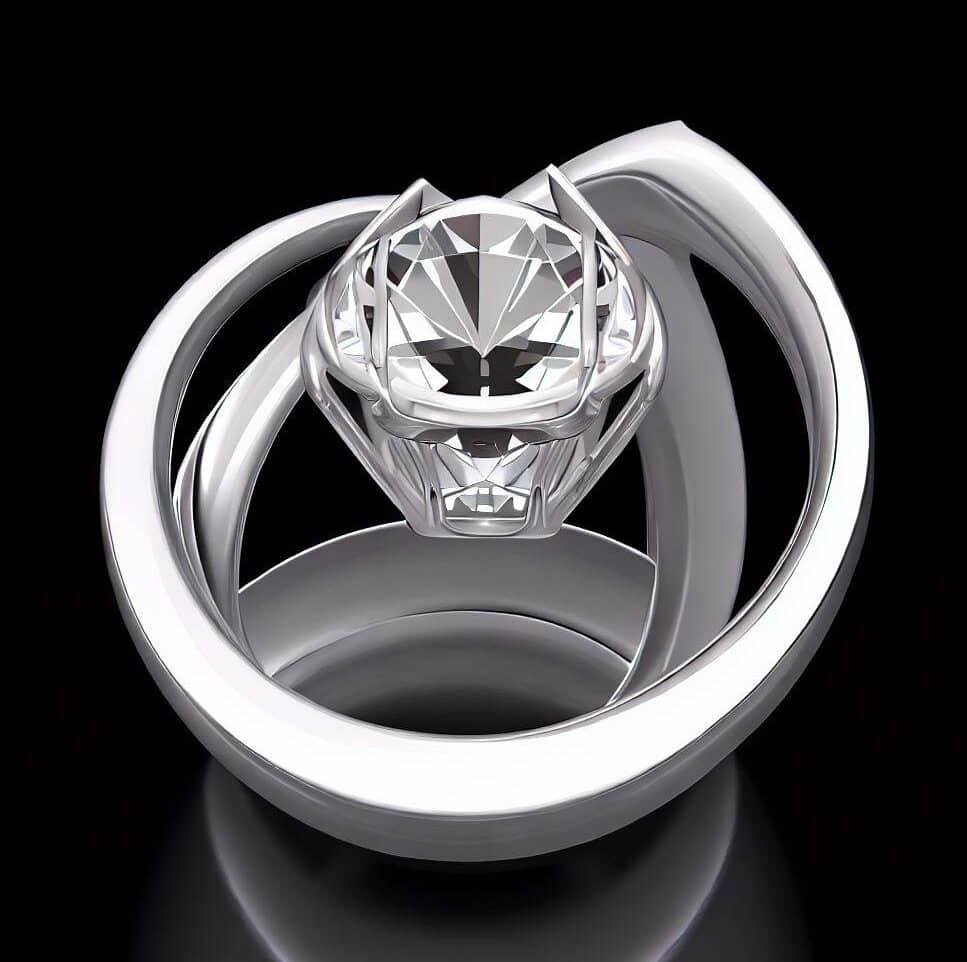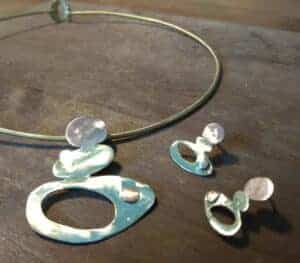Talking about design
Design as a foundation for life
Design plays a fundamental role in people's lives and society in general. It is a discipline that goes beyond aesthetics and the creation of beautiful objects; it is an approach that addresses problem-solving, improving quality of life, and creating meaningful experiences; impacting all aspects of human existence, from how we interact with our environment to how we feel emotionally. Its focus on functionality, innovation, sustainability, and improving the human experience makes it a powerful tool for enhancing the quality of life and overall well-being.
- Functionality: Design seeks efficiency and functionality in the products, spaces, and services we use daily. Good design ensures that things are easy to use, safe, and meet people's needs and expectations.
- Innovation: Design drives innovation as it challenges traditional ways of doing things and seeks creative solutions to complex problems. Through design, novel products and services that improve everyday life and the user experience can be introduced.
- Meaningful experiences: Design creates experiences that can have an emotional impact on people. From the interior design of a home to the user experience of an application, design can influence how we feel and perceive the world around us.
- Sustainability: Sustainable design concerns reducing the environmental and social impact of products and processes. A sustainable design approach ensures that solutions are more responsible and respectful of the environment and communities.
- Effective communication: Graphic design and visual communication are fundamental to conveying information clearly and understandably. From traffic signs to logos and posters, design improves communication and facilitates the understanding of important messages.
- Identity and culture: Design contributes to shaping the cultural identity of a society. Art, architecture, and design traditions reflect the history, values, and beliefs of a community.
- Health and well-being improvement: Design can influence people's quality of life by creating environments and products that promote health and well-being. From designing more welcoming hospitals to developing innovative medical devices, design can make a difference in healthcare and health.
Design applied in all arts
Design is a discipline applied to all arts and creative fields with the aim of conceiving and planning the creation of products, spaces, visual communications, and aesthetic experiences. Its main function is to solve problems and satisfy both functional and aesthetic needs.
Design is applied to various arts and creative fields:
- Graphic Design: Focuses on creating visual communications such as posters, logos, brochures, books, web pages, and more. It is fundamental in the world of advertising, branding, and visual identity of companies and organizations.
- Industrial Design: Focuses on the conception of manufactured products and everyday objects, from appliances to furniture and automobiles. It combines aesthetic aspects with functionality and ergonomics.
- Fashion Design: Addresses the creation of garments and accessories, taking into account both aesthetics and functionality, comfort, and market trends.
- Interior Design: Deals with planning and designing habitable and functional spaces such as homes, offices, shops, and other environments, considering comfort and aesthetics.
- Architectural Design: Involves the conception of buildings and structures, integrating aesthetic, functional, safety, and sustainability aspects.
- Landscape Design: Focuses on the planning and design of outdoor spaces such as parks, gardens, and public areas, combining natural and constructed elements.
- User Experience (UX) Design: Focuses on creating optimal interactive experiences for users of digital products, such as applications and websites, ensuring intuitive and satisfying navigation.
- Video Game Design: Combines visual, sound, and interactive aspects to create engaging and immersive gaming experiences.
- Set Design: Involves creating environments and sets for theater, film, television, and live events, supporting narrative and performances.
- Jewelry Design: Deals with creating unique and attractive jewelry pieces, considering materials, aesthetics, and ease of use.
Design is an essential tool in all arts and creative fields as it allows shaping ideas, conveying messages, and creating meaningful and functional aesthetic experiences for people. Its application contributes to enriching and improving the quality of life, culture, and aesthetics in various areas of society.
Influence of Jewelry on Interior Design
Jewelry can have a significant influence on interior design, as it shares several aesthetic and conceptual aspects with the world of design. Below are some ways in which jewelry influences interior design:
- Style and Aesthetics: Like interior design, jewelry is related to style and aesthetics. Interior designers often draw inspiration from jewelry designs to create spaces that reflect elegance, sophistication, and beauty. Ornamental elements, patterns, and textures found in jewelry can be adapted to wall coverings, textiles, lamps, and other decorative elements in an interior space.
- Materials and Finishes: The materials used in jewelry-making, such as gold, silver, copper, and various gemstones, can influence the choice of materials and finishes in interior design. For example, gold or silver elements may be used in decoration to evoke the brilliance of jewelry.
- Details and Ornamentation: Jewelry often features intricate details and ornamentation. These same concepts can be translated into interior design through the use of moldings, appliqués, reliefs, and decorative details that add a touch of luxury and sophistication to spaces.
- Inspiration from Iconic Designs: Some iconic jewelry designs, such as filigree patterns, gemstone settings, or pendant designs, can be used as inspiration for creating patterns and shapes in interior design.
- Color Palettes: Colors used in jewelry, such as ruby red, sapphire blue, and emerald green, can inspire the choice of color palettes in interior design. These precious tones can be used to create luxurious and elegant atmospheres.
- Jewelry as Decorative Element: In interior design, jewelry itself can become a decorative element. Jewelry can be displayed in showcases or elegant display boxes as works of art, adding a touch of luxury and personality to interior spaces.
Jewelry can influence interior design by providing inspiration in terms of style, materials, details, and color palettes. This influence can enrich the design of interior spaces and create sophisticated and appealing environments.
Influence of Interior and Architectural Design on Jewelry
Interior and architectural design can have a significant influence on the world of jewelry. Although it may seem that these two disciplines are separate, they intertwine in certain aspects that affect both the display and the creation of jewelry.
Some of the ways in which interior and architectural design influence jewelry:
- Stores and Display Spaces: The interior design of jewelry stores and display spaces has a direct impact on how customers perceive the jewelry. A well-designed environment can create a more pleasant and sophisticated shopping experience, which can influence customers' purchasing decisions. Lighting, the arrangement of jewelry on counters and in showcases, and the choice of materials and colors all contribute to creating a brand image and a suitable atmosphere.
- Jewelry Presentation: The architectural design of jewelry stores and their furniture can affect how jewelry is presented. Display case styles, showcases, and space layout influence how pieces stand out, which can affect the perception of their value and beauty.
- Inspiration for Jewelry Creation: Architects and interior designers can be a source of inspiration for jewelry designers. Architectural elements, shapes, lines, and textures can be translated into jewelry designs, creating unique and original pieces.
- Materials and Techniques: Architecture and interior design can introduce new materials and construction techniques that, when creatively applied, can enrich jewelry creation. Exploring unconventional materials or using innovative techniques can lead to cutting-edge and distinct jewelry designs.
- Spaces for Creation: Jewelry designers also require creative spaces to develop their work. The architectural design of workshops and studios can have an impact on the jewelry design and manufacturing process, offering inspiring and functional environments.
- Integration of Jewelry in Architectural Spaces: In some cases, jewelry is integrated into the architectural design itself. Elements of jewelry can be incorporated into facades, walls, railings, or decorative details, creating a unique connection between architecture and jewelry.
Interior and architectural design have a significant influence on jewelry, both in how it is presented and sold and in the inspiration it provides to jewelry designers. The interaction between these disciplines can lead to the creation of unique pieces and a more attractive and enriching jewelry experience for consumers.
Influence of Jewelry on Graphic Design
Jewelry can have a significant influence on graphic design, especially in terms of inspiration and visual styles. Below are some ways in which jewelry can influence graphic design:
- Aesthetic Inspiration: Jewelry, with its intricate shapes, elegant designs, and use of precious materials, can inspire graphic designers in creating patterns, illustrations, and decorative elements. The details and craftsmanship present in jewelry can be adapted and used to enrich graphic designs, creating visually appealing compositions.
- Use of Colors and Materials: Gemstones and metals used in jewelry offer a wide range of colors and textures that can be replicated in graphic design. Bright tones, metallic finishes, and luxurious details can be employed to create logos, illustrations, and designs that evoke the elegance and luxury associated with jewelry.
- Typography: Typography in jewelry, such as inscriptions on rings or pendants, can inspire graphic designers to create custom fonts and lettering that add a distinctive touch to their designs.
- Logo and Brand Design: The sophistication and value associated with jewelry can influence the design of logos and brands of companies related to the jewelry industry. Symbols and visual elements representing jewelry can reflect luxury, exclusivity, and elegance.
- Composition and Balance: Jewelry designs often require careful composition and visual balance to enhance the beauty of the piece. These design principles also apply to graphic design, where good composition is essential to create attractive and harmonious pieces.
- Representation of Jewelry in Advertising: In graphic design, jewelry can be featured in advertising campaigns or catalogs. The creative use of jewelry photographs in promotional materials can highlight specific details and features, generating interest and desire in consumers.
- Emotion and Meaning: Jewelry is associated with emotions, special events, and personal meanings. This emotional charge can be a source of inspiration for graphic designers seeking to create designs that convey feelings and connections with the target audience.


Sandra Sanchez
Sandra is passionate about jewelry and interior design. She graduated in interior design from Universidad Taller 5 in Colombia and has completed several courses and postgraduate studies in Jewelry in Barcelona and Madrid, Spain. She combines her work as a jeweler and interior designer with teaching.
